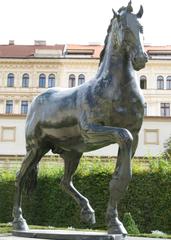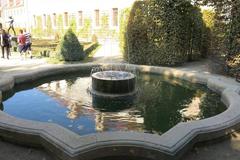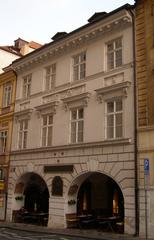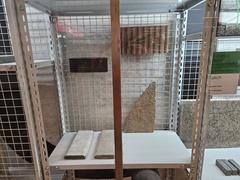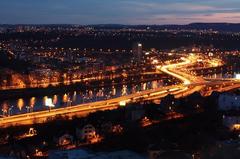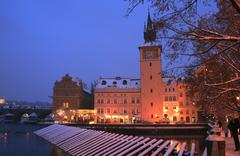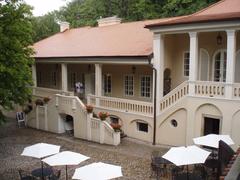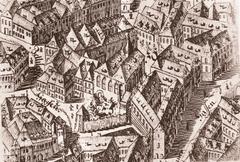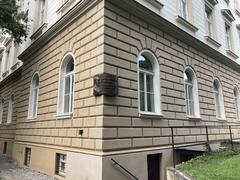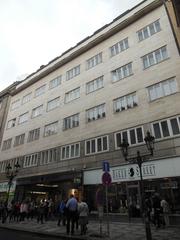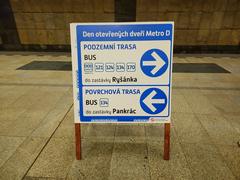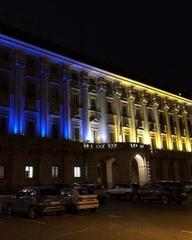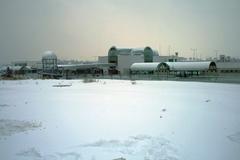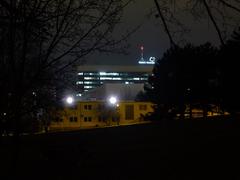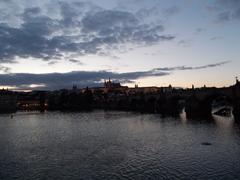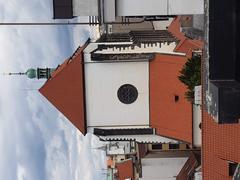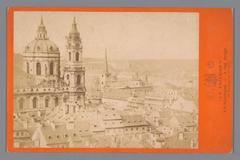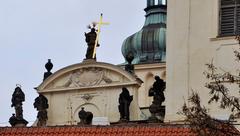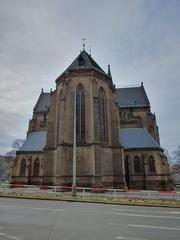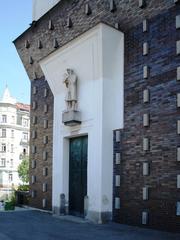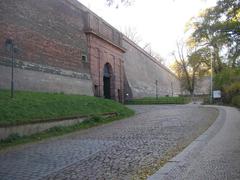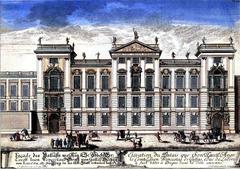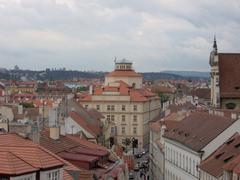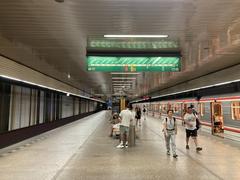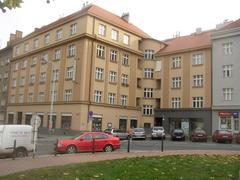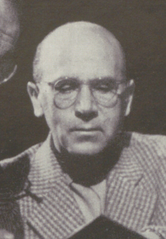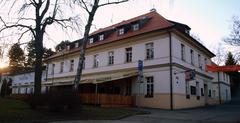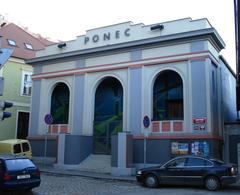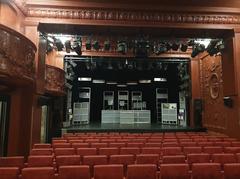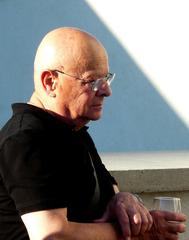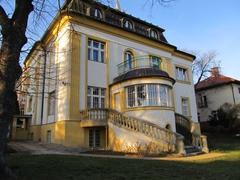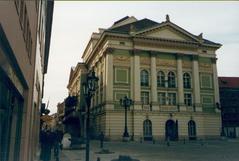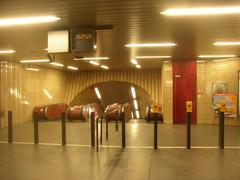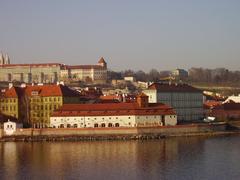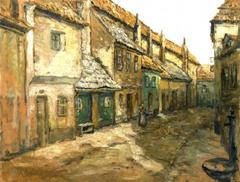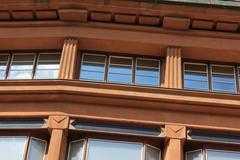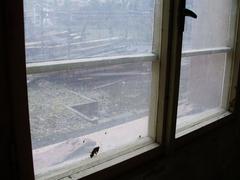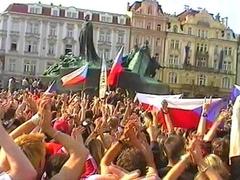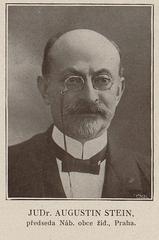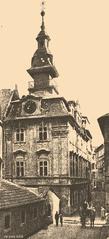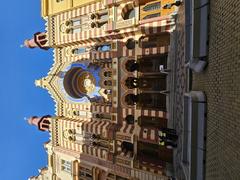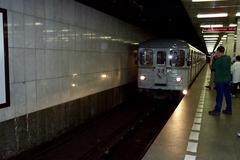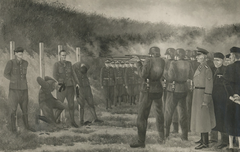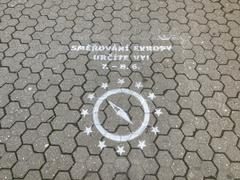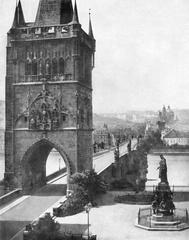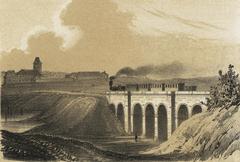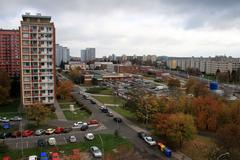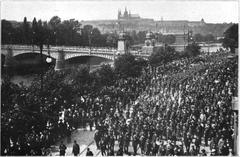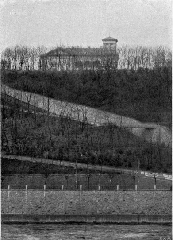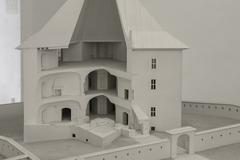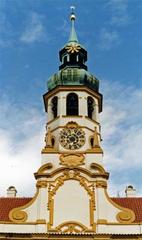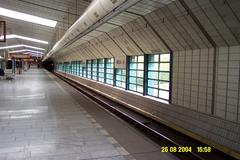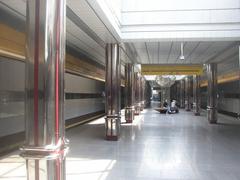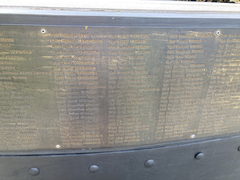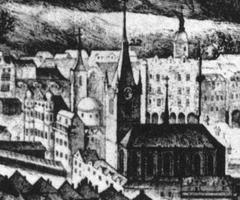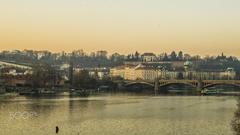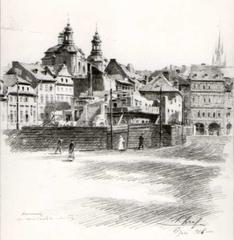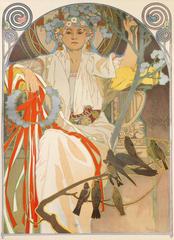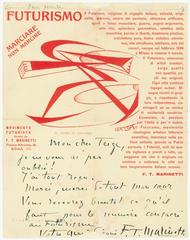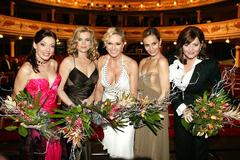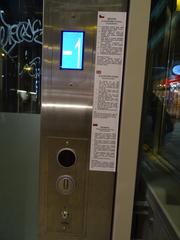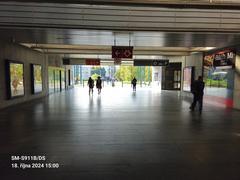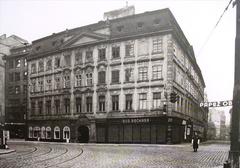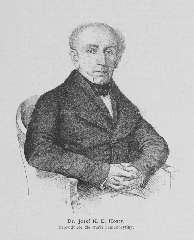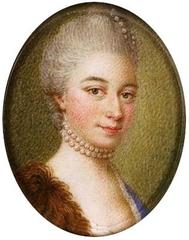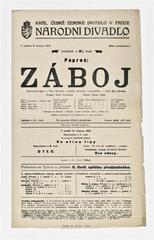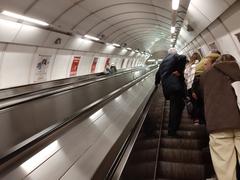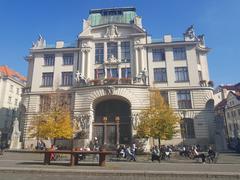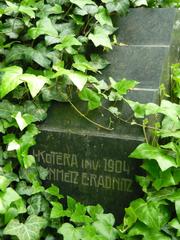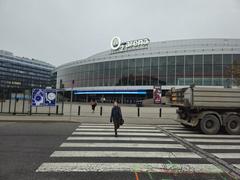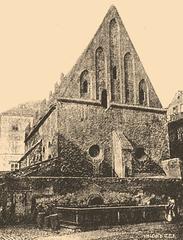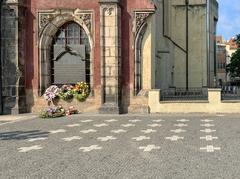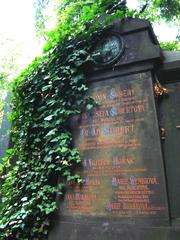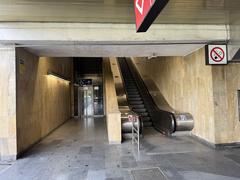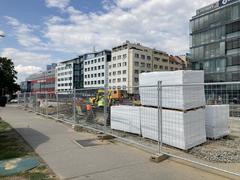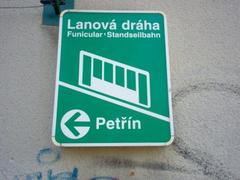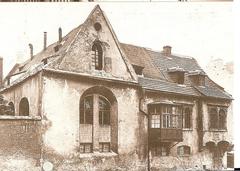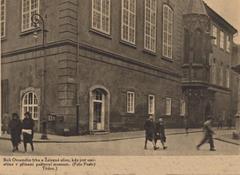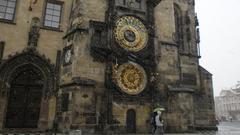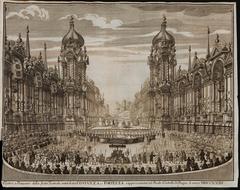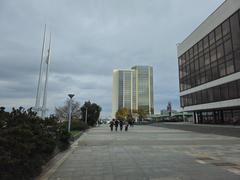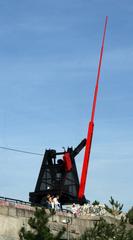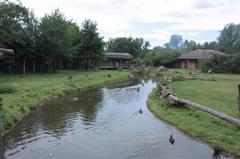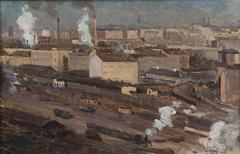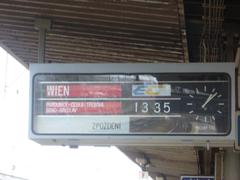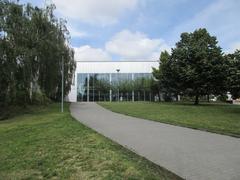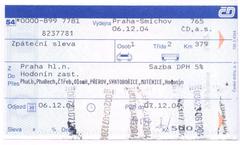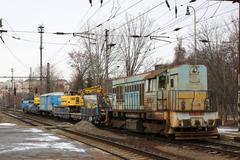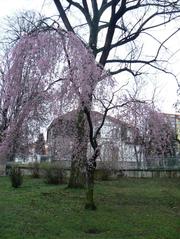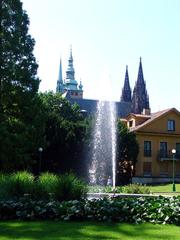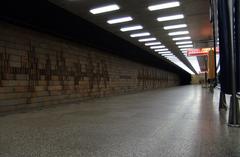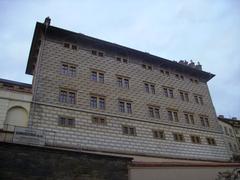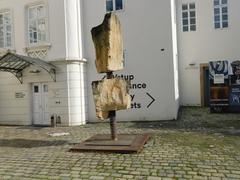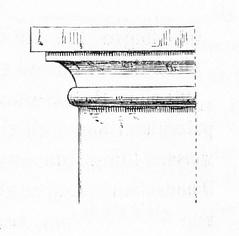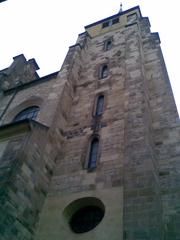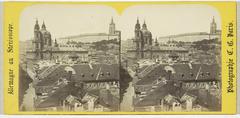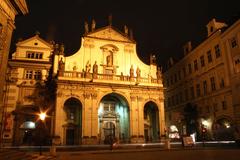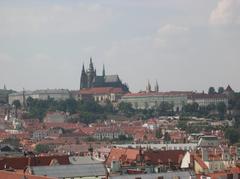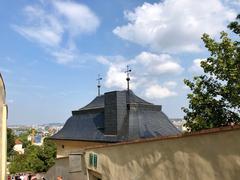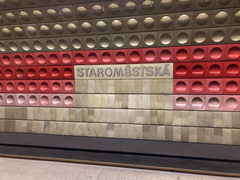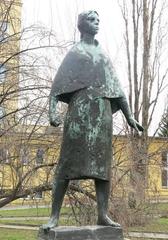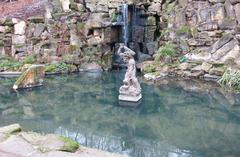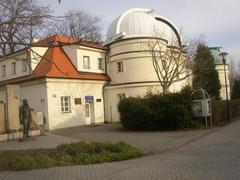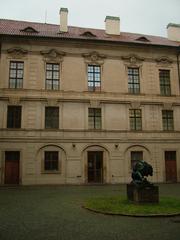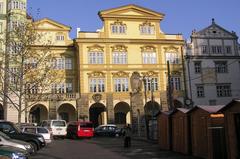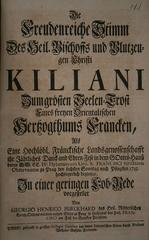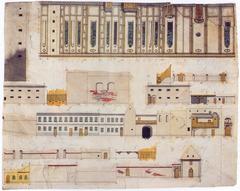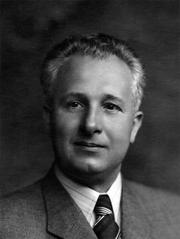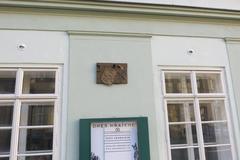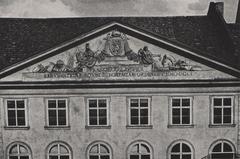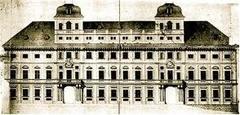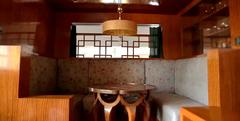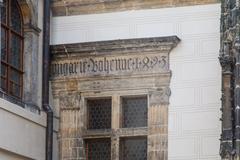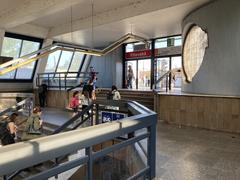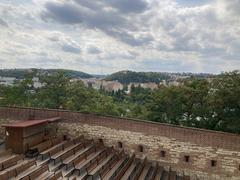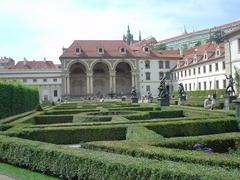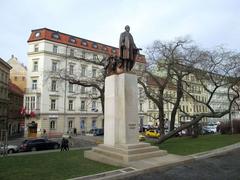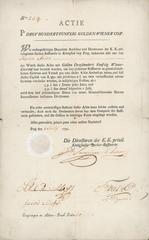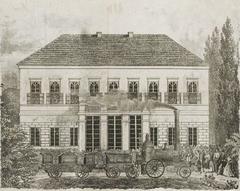
Comprehensive Guide to Visiting Valdštejnská zahrada, Prague, Czech Republic
Date: 31/07/2024
Introduction
Nestled in the heart of Prague, Valdštejnská zahrada, also known as the Wallenstein Garden, is one of the city’s most exquisite and historically significant sites. Constructed between 1623 and 1629 as part of the Wallenstein Palace complex, this garden epitomizes early Baroque architecture and landscape design. Commissioned by Albrecht von Wallenstein, a prominent military general during the Thirty Years’ War, the garden was designed to rival the grandeur of the Habsburgs (Prague.eu). Its layout was crafted by Italian architects Giovanni Pieroni, Nicolo Sebregondi, and Andrea Spezza, who envisioned a grand Italian Mannerist park with strict geometric patterns and elaborate decorations (Delve into Europe). This guide will delve into the garden’s rich history, architectural marvels, visiting information, and much more, making it an essential destination for history enthusiasts and those seeking a tranquil escape in Prague.
Table of Contents
- Introduction
- Historical Background
- Architectural Highlights
- Later Modifications and Restorations
- Modern-Day Significance
- Flora and Fauna
- Visitor Information
- Special Events and Guided Tours
- Photographic Spots
- Conclusion
- FAQ
Historical Background
Origins and Construction
Valdštejnská zahrada, also known as the Wallenstein Garden, is an exemplary piece of early Baroque architecture in Prague, Czech Republic. The garden was constructed between 1623 and 1629, in parallel with the Wallenstein Palace, under the commission of Albrecht von Wallenstein, a prominent military general serving Emperor Ferdinand II during the Thirty Years’ War (Prague.eu). Wallenstein, who had acquired a substantial tract of land below Prague Castle, envisioned a grandiose palace complex that would rival the grandeur of the Habsburgs.
Design and Layout
The design of the garden was entrusted to three Italian architects: Giovanni Pieroni, Nicolo Sebregondi, and Andrea Spezza. Their task was to create a garden that would complement the opulence of the palace. The garden was laid out in the style of an Italian Mannerist park, characterized by its strict geometric patterns and elaborate decorations (Delve into Europe). The garden spans an area of 1.7 hectares, making it one of the largest palace gardens in Prague.
Architectural Highlights
Sala Terrena
One of the most striking features of the garden is the Sala Terrena, a monumental three-arcade building that serves as a focal point. This structure, unprecedented in its time, was designed to extend the living spaces of the palace into the garden, creating a seamless transition between indoor and outdoor spaces (Prague Now). The Sala Terrena is adorned with frescoes and provides a stunning backdrop for various cultural events held in the garden.
Sculptures and Decorations
The garden is adorned with numerous statues and fountains, many of which depict figures from Greek mythology. These statues were originally sculpted by Adrian de Vries between 1625 and 1626. However, the originals were taken to Sweden as war booty in 1648 during the Thirty Years’ War and are now housed at Drottningholm Palace (Delve into Europe). The statues in the garden today are replicas, meticulously crafted to preserve the historical integrity of the site.
The Grotto Wall
Another unique feature of the garden is the artificial grotto wall, a mass of lime stucco stalactites that dates back to the 17th century. This wall is not only a visual marvel but also a playful element, as it contains hidden silhouettes of animals and faces, adding an element of mystery and intrigue to the garden (Fodor’s Travel).
Later Modifications and Restorations
The garden has undergone several modifications and restorations over the centuries. In the 18th century, it was almost entirely forested and crisscrossed by numerous small paths. Significant changes were made in the 1950s, including the re-establishment of the large pond (Národní památkový ústav). From 1996 onwards, the garden became part of the Senate of the Czech Republic, which undertook extensive restoration efforts at the turn of the millennium to preserve and enhance its historical features.
Modern-Day Significance
Today, Valdštejnská zahrada serves as a tranquil oasis in the heart of Prague, offering visitors a glimpse into the opulent lifestyle of the Baroque era. The garden is open to the public free of charge and hosts various cultural events, including concerts and theatrical performances during the summer months (Prague Ticket Office). The garden’s rich history and architectural splendor make it a must-visit destination for anyone exploring Prague.
Flora and Fauna
The garden is not only a historical and architectural gem but also a haven for diverse flora and fauna. It features a variety of trees, including oaks, maples, and magnolias, as well as meticulously maintained boxwood hedges and tulips. The grotto wall is adorned with hydrangeas, and the southern wall of the palace is home to grapevines and fig trees (Národní památkový ústav).
The garden also hosts a variety of birds, including peacocks, which have been bred there since 2000. Other avian residents include moorhens and wild ducks, which frequently return to the garden. The aviary near the grotto wall houses Eurasian eagle-owls, the largest owls in the region, with wingspans reaching up to 170 cm (Národní památkový ústav). The large pond is home to various fish species, including catfish, pike, and koi carp, considered some of the most beautiful ornamental fish in the world.
Visitor Information
Accessibility and Visiting Hours
Valdštejnská zahrada is easily accessible via public transportation. Visitors can take the metro A (green line) to the Malostranská station and enter the garden through the gate near the station (Prague Now). The garden is open daily, with varying hours depending on the season. During the summer, it is open from 07:00 to 19:00 on weekdays and from 09:00 to 19:00 on weekends (Prague.eu).
Ticket Information
Entry to Valdštejnská zahrada is free of charge. However, visitors are encouraged to check for any special events or guided tours that may require a ticket. Information on these events can typically be found on the garden’s official website or through the Prague Ticket Office.
Travel Tips and Nearby Attractions
When planning your visit, consider exploring nearby attractions such as Prague Castle, Charles Bridge, and the Old Town Square. These sites are within walking distance and offer a deeper dive into Prague’s rich history and culture. Comfortable walking shoes are recommended, and it’s always a good idea to carry a bottle of water, especially during the warmer months.
Special Events and Guided Tours
Valdštejnská zahrada frequently hosts cultural events, including concerts, theater performances, and art exhibitions. Guided tours are available and provide an in-depth look at the garden’s history, architecture, and flora and fauna. Check the official website or local event listings for the latest information on upcoming events and tour schedules.
Photographic Spots
The garden offers numerous picturesque spots perfect for photography. Notable locations include the Sala Terrena, the large pond with its reflection of the palace, and the intricate details of the grotto wall. Early morning or late afternoon visits are ideal for capturing the garden in the best light.
Conclusion
Valdštejnská zahrada stands as a testament to the opulence and grandeur of Baroque architecture and landscape design. Its rich history, from its origins under Albrecht von Wallenstein to its modern-day significance as a cultural hub, makes it a must-visit destination in Prague. The garden’s architectural features, such as the Sala Terrena, the intricate sculptures, and the unique grotto wall, offer visitors a glimpse into the artistic and cultural achievements of the early 17th century. Today, Valdštejnská zahrada continues to serve as a serene oasis in the bustling city, hosting various cultural events and providing a haven for diverse flora and fauna. With free admission and convenient accessibility, it is an ideal spot for both locals and tourists to explore and enjoy. Whether you’re interested in history, architecture, or simply looking for a picturesque location to relax, Valdštejnská zahrada promises to be a memorable part of your Prague adventure. For more information and updates, consider downloading the Audiala mobile app or following us on social media.
FAQ
Q: What are the visiting hours for Valdštejnská zahrada? A: The garden is open daily with varying hours depending on the season. During the summer, it is open from 07:00 to 19:00 on weekdays and from 09:00 to 19:00 on weekends.
Q: Do I need to buy tickets to enter Valdštejnská zahrada? A: Entry to the garden is free of charge. However, special events or guided tours may require a ticket.
Q: How can I get to Valdštejnská zahrada? A: The garden is easily accessible via public transportation. Take the metro A (green line) to the Malostranská station and enter through the gate near the station.
Q: Are there guided tours available in Valdštejnská zahrada? A: Yes, guided tours are available and provide an in-depth look at the garden’s history, architecture, and flora and fauna. Check the official website or local event listings for tour schedules.
Q: What should I bring when visiting Valdštejnská zahrada? A: Comfortable walking shoes and a bottle of water are recommended, especially during the warmer months.
References
- ‘Valdštejnská zahrada,’ n.d., Prague.eu source url
- ‘Wallenstein Gardens, Prague,’ n.d., Delve into Europe source url
- ‘Wallenstein Garden and Palace for a Pleasant Stroll,’ n.d., Prague Now source url
- ‘Valdštejnská zahrada,’ n.d., Fodor’s Travel source url
- ‘Explore the Magnificent Valdštejnská zahrada in Prague,’ n.d., CzechDaily source url
- ‘Wallenstein Garden,’ n.d., Prague.net source url
- ‘Things to Do in Prague in July,’ n.d., View from Prague source url
